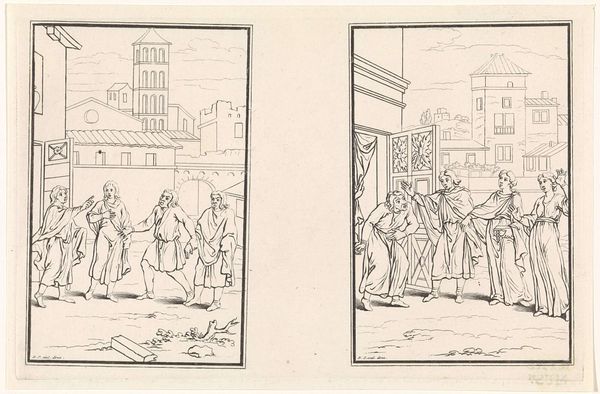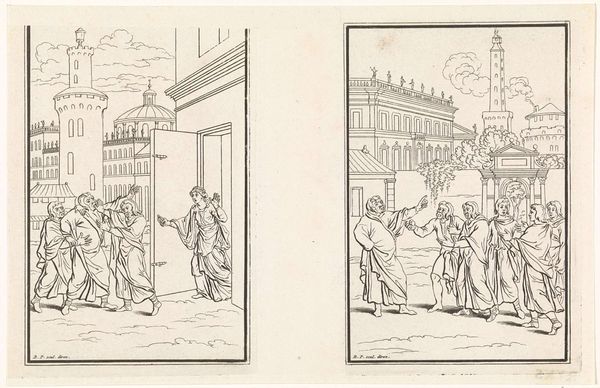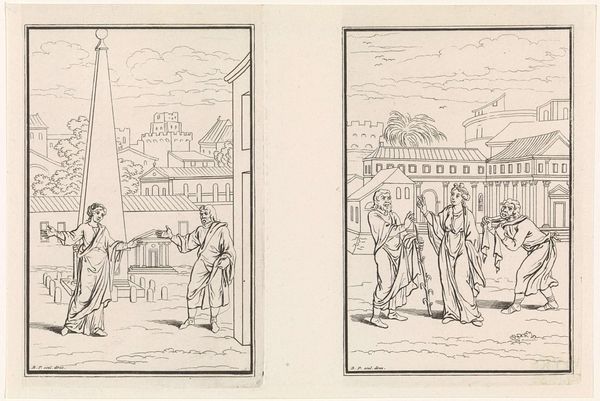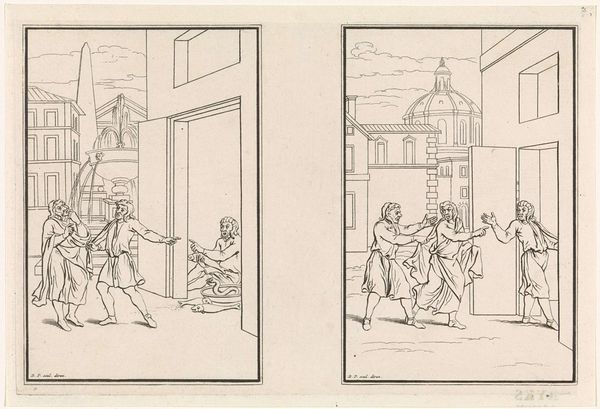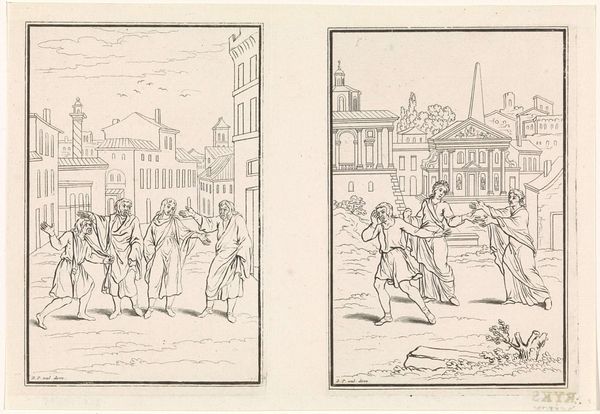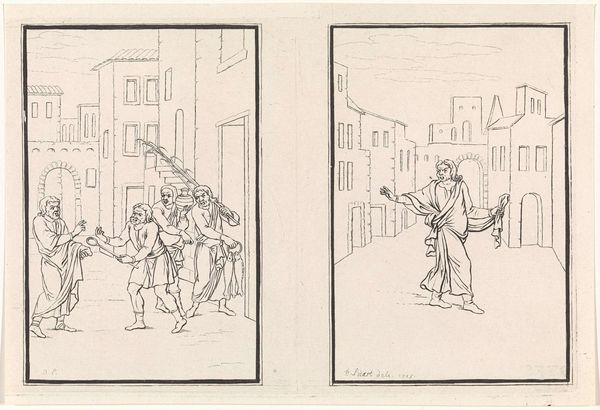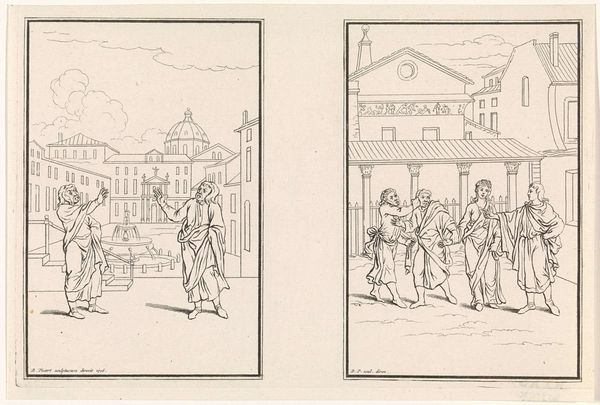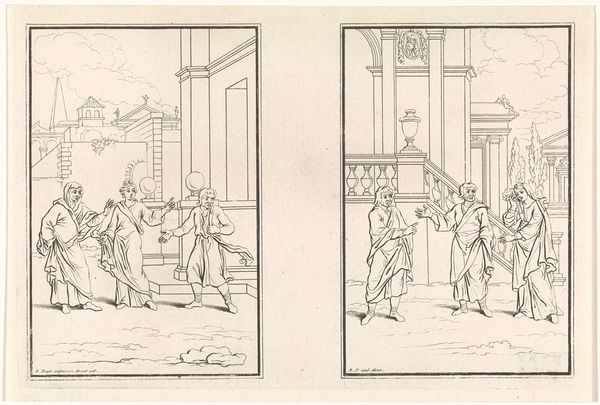
Scène uit de komedie Andria en scène uit de komedie Eunuchus van Terentius 1716
0:00
0:00
bernardpicart
Rijksmuseum
drawing, etching, paper, ink
#
drawing
#
narrative-art
#
baroque
#
etching
#
figuration
#
paper
#
ink
#
line
#
history-painting
Dimensions: height 137 mm, width 195 mm
Copyright: Rijks Museum: Open Domain
Editor: Here we have Bernard Picart’s 1716 drawing, “Scène uit de komedie Andria en scène uit de komedie Eunuchus van Terentius,” rendered in ink and etching on paper, currently held at the Rijksmuseum. The composition shows two distinct theatrical scenes side-by-side. What’s most striking to me is how stark and minimal they are, despite depicting such active narrative moments. What do you make of these stark, yet dramatic tableaus? Curator: It's fascinating to see these comedies visualized. Picart’s choice to depict these scenes with such clean lines places the focus squarely on the dramatic interactions between the characters. We must remember, theatre, particularly classical comedies like those of Terence, played a significant role in shaping social values and discourses in the early 18th century. The themes they explored–love, deception, social status–were all being actively debated in the salons and coffee houses of the day. What can we glean about how this art might participate in society? Editor: That's a great point. Looking closer, you can really see how body language and facial expressions carry the weight of the storytelling, almost like silent film. Was this meant for a broader audience beyond just art enthusiasts? Curator: Precisely. Etchings like these often served as illustrations for books and plays, making them accessible to a wider reading public and helping to solidify the visual representation of these stories in the collective imagination. Consider the power dynamics implied in the scene from "Eunuchus", the visual interplay mirroring the themes in the comedies themselves, reinforcing or perhaps even challenging contemporary social hierarchies. How do you read that relationship now? Editor: Now that you point it out, that theatricality seems to magnify social situations, presenting archetypes on display for audiences to engage with. Thanks for untangling how socially embedded this piece really is! Curator: My pleasure. Seeing it as a form of public engagement changes the viewing experience entirely, doesn't it?
Comments
No comments
Be the first to comment and join the conversation on the ultimate creative platform.

